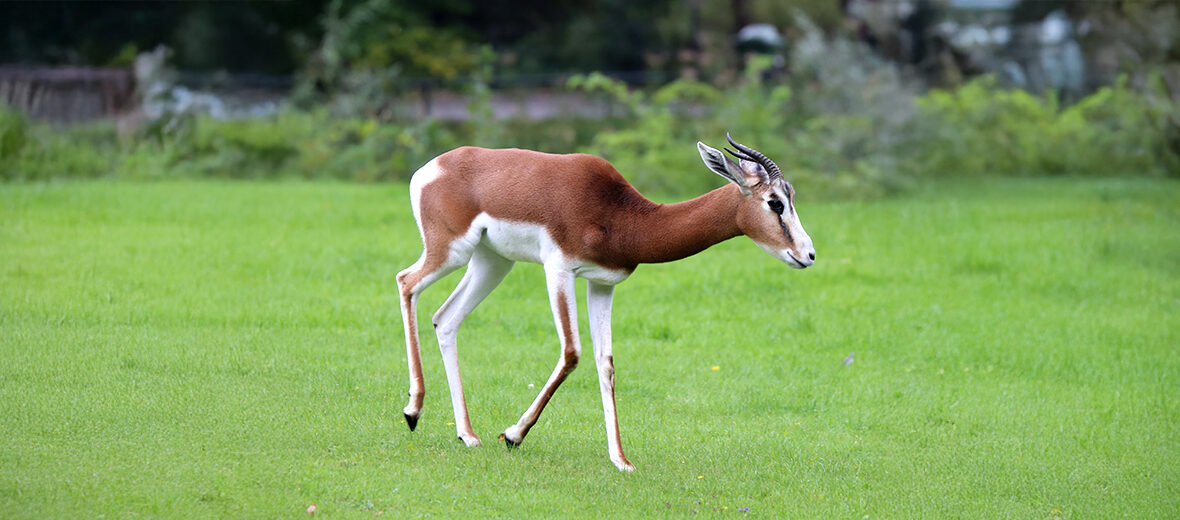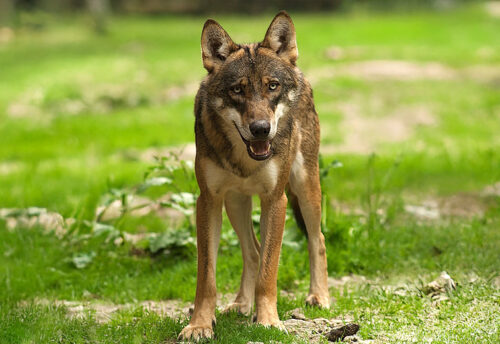
The dama gazelle, aka addra gazelle or mhorr gazelle, dwells in Africa, in the Sahara desert and the Sahel. As a result of uncontrolled hunting; habitat loss and destruction at the hands of farming and ranching, as well as the rearing of domesticated farm animals; recreational activities; war; civil unrest; and climate change, that has brought about habitat altering droughts, these critters are rapidly diminishing. The IUCN lists these gazelles as Critically Endangered, as well as Critically Depleted. Their population trend is decreasing.
First the Stats…
Scientific name: Nanger dama
Weight: Up to 165 lbs.
Length: Up to 5.5 feet
Height: Up to 37 inches, at the shoulders
Lifespan: Up to 18 years
Now on to the Facts!
1.) Their horns measure up to 14 inches.
2.) The species recovery score of these critters is a mere 14%. Which is in correlation to their low population.
3.) There are only an estimated 200 wild individuals remaining, to date.
4.) They prefer grasslands, shrublands, semi-deserts, open savannas, and mountain plateaus.
5.) Grasses, herbs, leaves (primarily Acacia leaves), shoots, shrubs, and fruit are all on the menu.
But wait, there’s more on the dama gazelle!
6.) Under the name meyna or ménas (Hausa), these gazelles are shown on the badge of the Niger national football team, who are more popularly called the Ménas.
7.) Territories are denoted with urine and dung piles, as well as secretions from glands near their eyes.
Did you know…?
Their populations have fallen by 80% over the last decade!
8.) There are 3 subspecies recognized and are separated by the color on their back, flanks, and haunches. These include: mhorr gazelle, N. d. dama, and the addra gazelle.
9.) While not requiring much water, they do need more than other desert animals. The ongoing drought is making it harder and harder to find standing water, which is culling their populations.
10.) Tourists taking pictures of these gazelles are perceived as a threat. If approached to any degree, they will run away from the perceived danger, and in the hot season can overheat and die of stress.
But wait, there’s still more on the dama gazelle!
11.) Captive breeding reserves have been set up in various countries and have had great success in breeding these critters. The problem exists, however, of inbreeding; since there is reduced variances in bloodlines.
12.) Females undergo up to a 195 day gestation (pregnancy) that yields a single fawn.
13.) In captivity birthing happens year round, while in the wild, breeding only occurs from August – October.
Now a Short Dama Gazelle Video!
Be sure to share & comment below! Also, check out the Critter Science YouTube channel. Videos added regularly!

Want to suggest a critter for me to write about? Let me know here.
Some source material acquired from: Wikipedia & IUCN
Photo credit: Rufus46



